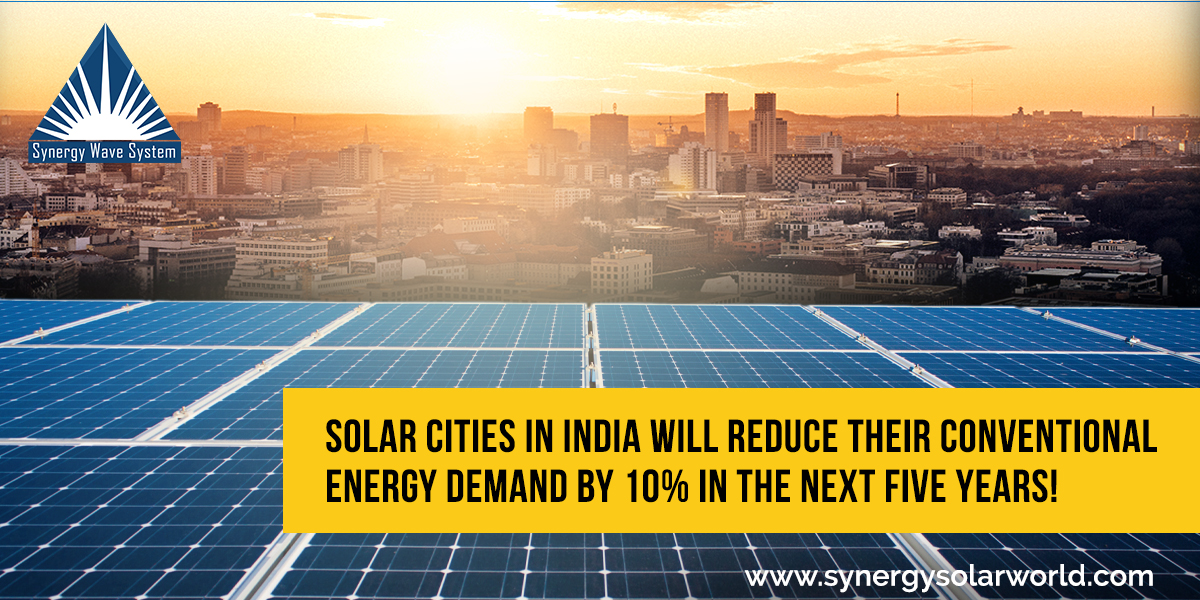Synergy Wave System

Solar Cities: What They Are and Why We Need Them"
Solar Cities: What They Are and Why We Need Them"
Rapid modernization and industrialization has put tremendous pressure on India’s energy demands. Even where this demand is met, there are unprecedented levels of Green House Gas emissions that are irreversibly damaging our ecosystem.
Urban townships and cities are finding it difficult to cope with the increasing energy demand. This is the reason why government has designed ‘Development of Smart Cities Programme’, which will guide local bodies to lead their cities in becoming renewable energy cities, or ‘Solar Cities’.
What is a Solar City?
Simply put, a designated solar city should look at reducing its conventional energy demand by 10 percent by the end of five years of implementing renewable energy initiatives. Although called ‘Solar Cities’, there are not limited to solar energy. Wind energy, biogas, waste-to-energy projects are all under its purview. The objective of solar cities is to encourage local authorities to adopt renewable energy technologies and energy efficiency measures.
The ministry has already initiated various projects for solar heating in corporate set-ups, hospitality industry, housing projects, etc. The solar cities will carry forward these initiatives of the government at a more micro level.
How is a city chosen to be a Solar City?
The population of such a city could be anything between 50 thousand to 5 lakhs. However, more importantly, for a city to be considered to be a Solar City, the local authorities or the residents or private developers should have exhibited potential for conserving conventional energy usage and adopting renewable energy. Contrary to general beliefs, there are, in fact, quite a few townships and cities that have shown robust adoption of renewable energy initiatives and have led the way for other cities to follow suit. A total of 60 cities/towns have been shortlisted from all over the country to be developed as model solar cities. Each state has a minimum of one city and a maximum of five cities.
The objectives of all these solar cities remain the same. They must map out their current and future energy demands and how they plan to meet them. Additionally, they must list out the various renewable energy projects that have undertaken or intend to initiate to bring down their conventional energy dependency by at least 10 per cent. Furthermore, what roles and responsibilities would the urban local bodies and civic bodies play in implementing this master plan.
The government has announced financial assistance for shortlisted solar cities in various forms. From making of the master plan (sanctioned amount is Rs 10 lakhs) to setting up of solar city cells (again, sanctioned amount is Rs 10 lakhs), the government is supporting this initiative with gusto. Also, financial incentives will also be made available for installation of renewable energy systems and devices.
Solar Cities is a noble idea and, if planned and executed properly, will play a pivotal role in India’s future in renewable energy. The government is supporting this initiative with enthusiasm and it will be a wait-and-watch game to see how well this is implemented in the coming years.
